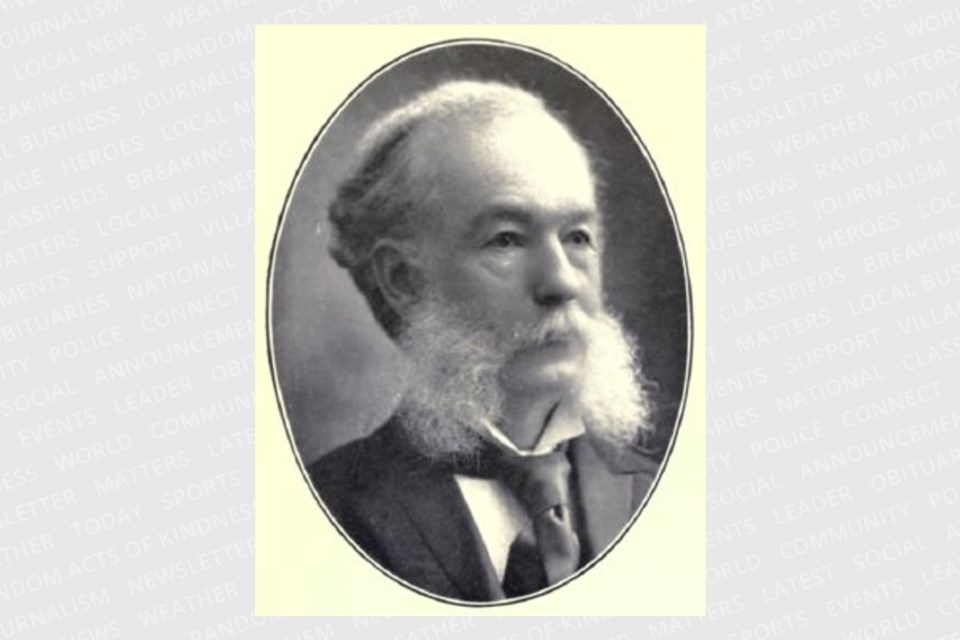Editor's note: To read Part 1, click here.
In April 1921, Joseph Montagu Leeds, recently widowed and broken-hearted, handed over the keys to his grand estate on St. Vincent Street and immediately boarded a train bound for western Canada.
The new owners were a trio of single sisters of middle age. Lillian, Gertrude and Muriel Brock came from money and privilege, were well educated and had travelled extensively, but likely never before had a special place they could call their own.
Thomas Rees Brock, their grandfather, was born in Kingston, Jamaica in 1811. His father had been a military man and a medical doctor with land holdings in both Jamaica and his native England.
The Brocks returned to England about 1821. At 20 years old, Thomas immigrated to Canada and bought a lot in Wellington County, Ontario, five miles from Guelph, and began to homestead there.
In 1840, Thomas Brock decided that his education might serve him better in some line of work other than farming. Brock, with his wife and five children, moved into Guelph where Thomas Brock opened a store. Within a short time, the store was sold and Brock opened an office where he offered several services, including accounting, land agency and various administrative duties.
Ten years later, the 39-year-old father of 10 died under mysterious circumstances. While walking in the woods behind his home, Thomas Brock tripped on a log and shot himself in the chest.
Despite this early tragedy, the Brock children continued to thrive and become successful. Barristers, doctors and business entrepreneurs came from this brood.
William Rees Brock, Thomas’s eldest son, was born in 1836. In 1857, William married Anna Diamond. The couple moved to Bowmanville, Ont., and later to Montreal, as William learned the mercantile trade under other successful businessmen.
The family of William and Anna grew to include three sons — Reginald, William and Henry — and the three daughters — Lillian, Gertrude and Muriel — who eventually came to Barrie and purchased the property at 33 St. Vincent St.
It was Anna’s roots that inspired the name that the Brock sisters eventually bestowed upon the Barrie estate.
Abbeyleix is the name of both a small village in Laois, Ireland, and of a nearby castle-like mansion house. Anna Diamond Brock, and her mother, Anna Dolmage, were born in this area.
Ogilvy & Co., a Montreal-based dry goods company of the Simpson’s or Eaton’s style, sent William Rees Brock to Toronto about 1871 to run their new location at Bay and Front streets. In 1877, Brock started his own business and opened the W.R. Brock Co., at Bay and Wellington streets.
As you can imagine, this is where Brock made his fortune. Add to that investments in land speculation, shares in loan and insurance companies, interests in electric lighting, banks and newspapers, and you have one very wealthy man.
From 1900 until 1904, William Brock served as the MP for the riding of Toronto Centre.
The Great Fire of 1904 devastated the commercial and industrial centre of Toronto and destroyed 125 businesses including the W.R. Brock building. The four-storey building was rebuilt, expanded and was eventually demolished in 1970.
Brock handed the reins of W.R. Brock Co. to his son, Henry Brock, and retired from both business and politics.
William Brock passed away in 1917 and was followed by his wife, Anna, in 1919.
In 1921, Henry Brock was a barrister, living in a fine home on George Street, just north of Queen’s Park.
As for his brothers, Reginald, had built a life for himself in Montreal, and William, also of Toronto, had suffered from chronic illness for many years.
In the 1927 obituary for the junior William Brock, it was mentioned that he had spent a great deal of time at the estate in Barrie. It could be that the sisters had seen this as property as a place for their ailing sibling to find fresh air and a change of scenery.
Each week, the Barrie Historical Archive provides BarrieToday

